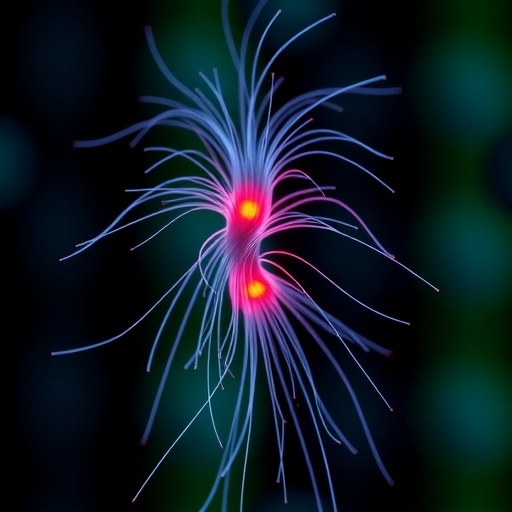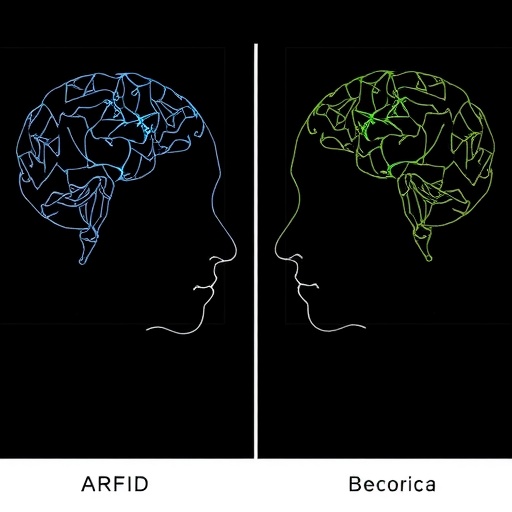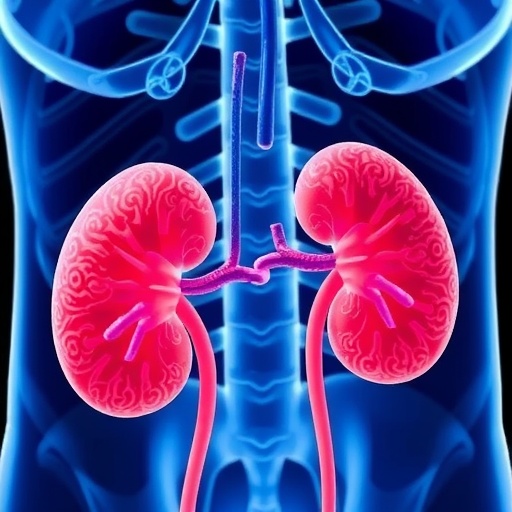In a groundbreaking advancement in neurodegenerative disease diagnostics, researchers at the Icahn School of Medicine at Mount Sinai have unveiled an innovative approach that utilizes the elemental composition of a single human hair strand to differentiate individuals afflicted with amyotrophic lateral sclerosis (ALS) from healthy controls. Published in the prestigious journal eBioMedicine, this pioneering study proposes a non-invasive, expedient, and accessible diagnostic paradigm that could revolutionize ALS detection and patient management worldwide.
ALS, a relentless and fatal neurodegenerative disorder characterized by the progressive degeneration of motor neurons, poses significant challenges to early diagnosis, hampering timely intervention efforts. The typical diagnostic window averages between 10 to 16 months from the onset of clinical symptoms in the United States, often delaying crucial support and treatment. Traditional diagnostic modalities rely on invasive fluid biopsies and sophisticated neuroimaging techniques, which are not only costly but also logistically cumbersome for widespread clinical deployment. This recent research shifts the diagnostic frontier to a seemingly simple biological substrate—human hair—shedding new light on elemental biodynamics as a biomarker for ALS.
At the core of this revolutionary study lies the utilization of laser ablation-inductively coupled plasma-mass spectrometry (LA-ICP-MS), an analytical method known for its ability to provide high-resolution temporal and spatial data on elemental composition. By directing a focused laser beam to vaporize minuscule segments of a hair fiber, the technique allows for the detection and quantification of trace elements and isotopes with exceptional sensitivity. In this study, hair strands from 391 participants, comprising 295 ALS-diagnosed patients and 96 healthy controls, underwent rigorous LA-ICP-MS analysis. Each strand yielded a wealth of data, capturing up to 800 discrete time points corresponding to elemental fluctuations occurring at two to four-hour intervals throughout hair growth.
The researchers quantified seventeen biologically relevant elements, including copper, zinc, magnesium, and lead, constructing intricate temporal profiles of elemental abundance. Employing sophisticated information theory-based computational frameworks, they dissected these patterns to unveil systemic dysregulation associated with ALS. Notably, the study revealed that copper, a trace element integral to numerous enzymatic processes and neuronal function, exhibited markedly diminished synchrony within elemental networks in ALS patients compared to healthy individuals. This loss of coordinated copper dynamics suggests a profound disruption in systemic copper metabolism, a pathological hallmark with significant implications for ALS pathogenesis.
Further stratification by sex unearthed intriguing sex-specific elemental imbalances: male ALS patients exhibited pronounced decrements in copper-zinc network coherence, whereas female patients demonstrated marked disturbances in chromium-nickel interactions. These differential patterns underscore the complexity of ALS and hint at divergent biochemical pathways that might underpin disease manifestation across genders. Such nuanced insights open avenues for precision diagnostics and tailored therapeutic strategies inspired by gender-specific biomarkers.
The implications of this research are profound and multifaceted. By harnessing hair strands as bioarchives that chronicle elemental fluctuations over time, clinicians could soon access a lightning-fast, painless diagnostic tool that circumvents the limitations of current practices. Unlike fluid biopsies or neuroimaging, hair sampling is straightforward, low-cost, and non-invasive, lending itself to broad implementation in diverse healthcare settings, including resource-limited environments.
Moreover, the temporal granularity of elemental data embedded in hair strands offers a dynamic window into the biodynamics of biometals implicated in ALS. This temporal dimension enriches diagnostic accuracy and provides a substrate for monitoring disease progression or response to therapy, potentially transforming patient care paradigms. As ALS remains incurable, early diagnosis enabled by such novel biomarkers is paramount in initiating symptomatic treatments, personalized nutritional plans, and multidisciplinary care interventions that collectively enhance life quality and survival outcomes.
Despite not yet yielding a validated diagnostic test, the study represents an essential proof-of-concept milestone. It demonstrates that the analysis of elemental biodynamics in hair is not merely theoretical but practically achievable, with measurable and reproducible differences between ALS patients and controls. This validation paves the way for expansive clinical trials to refine and standardize hair-based diagnostic platforms, which may one day integrate seamlessly into routine neurological assessments.
The research team, led by Manish Arora, BDS, MPH, PhD, and Vishal Midya, PhD, underscores the transformative promise of their method. Dr. Arora highlights the capacity of hair to serve as a peripheral mirror of systemic elemental balance, remarking that their approach “has the potential to transform how we diagnose ALS, making it faster, easier, and more accessible for patients.” Dr. Midya adds that these findings provide a foundation for scalable diagnostics that could be deployed at a population level, an advance critically needed in the fight against a disease as devastating as ALS.
This landmark investigation was conducted in collaboration with Linus Biotechnology, Inc., Dartmouth University, and Columbia University, complemented by funding from the National Institutes of Health (NIH) and the Centers for Disease Control and Prevention (CDC). These partnerships highlight the interdisciplinary and multi-institutional nature of cutting-edge efforts tackling neurodegenerative diseases.
As the research community awaits further validation studies and technological refinement, the potential of hair-strand elemental biodynamics as a diagnostic medium represents a beacon of hope for the ALS patient community. By shortening diagnostic delays, this innovation could enable earlier therapeutic engagement, improve management strategies, and ultimately contribute to better clinical outcomes.
Beyond ALS, this investigative framework may extend to other neurological disorders characterized by elemental imbalances, opening a new frontier in biomarker discovery and personalized medicine. The integration of advanced mass spectrometry with intelligent data analytics applied to an everyday biological sample exemplifies the ingenuity propelling modern biomedical research.
In summation, the compelling evidence presented by the Mount Sinai team illustrates that a single strand of hair is far more than keratinized tissue—it is a dynamic repository encoding systemic biochemical rhythms. Its analysis through state-of-the-art spectrometric technology has forged a novel pathway for ALS diagnostics, heralding a future where neurodegenerative diseases may be detected with greater speed, accuracy, and accessibility than ever before.
Subject of Research: Human tissue samples
Article Title: Dysregulation of hair-strand-based elemental biodynamics in amyotrophic lateral sclerosis
News Publication Date: September 4, 2025
Image Credits: Mount Sinai Health System
Keywords: Amyotrophic lateral sclerosis, ALS, Hair analysis, Biomarkers, Elemental biodynamics, Copper metabolism, Neurodegenerative diseases, Laser ablation inductively coupled plasma mass spectrometry, LA-ICP-MS, Non-invasive diagnostics, Neurological disorders
Tags: ALS biomarkersamyotrophic lateral sclerosis researchcost-effective diagnostic methodsearly diagnosis of ALSelemental composition biomarkerinnovative medical technologieslaser ablation ICP-MS techniqueMount Sinai researchneurodegenerative disease diagnosticsnon-invasive ALS detectionpatient management in ALSsingle hair strand analysis





